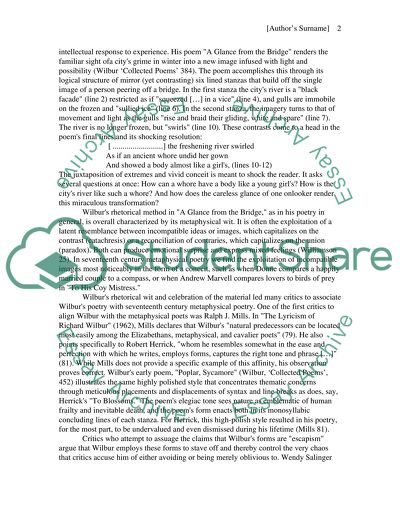Cite this document
(“Metaphysical Poetry: Richard Wilbur Essay Example | Topics and Well Written Essays - 2750 words”, n.d.)
Retrieved from https://studentshare.org/literature/1433219-metaphysical-poetry-richard-wilbur
Retrieved from https://studentshare.org/literature/1433219-metaphysical-poetry-richard-wilbur
(Metaphysical Poetry: Richard Wilbur Essay Example | Topics and Well Written Essays - 2750 Words)
https://studentshare.org/literature/1433219-metaphysical-poetry-richard-wilbur.
https://studentshare.org/literature/1433219-metaphysical-poetry-richard-wilbur.
“Metaphysical Poetry: Richard Wilbur Essay Example | Topics and Well Written Essays - 2750 Words”, n.d. https://studentshare.org/literature/1433219-metaphysical-poetry-richard-wilbur.


